This blog will discuss a handful of data science tools that help data scientists do their duties. We will learn about the most critical aspects of the tools and the advantages they provide. To know what the tools for data science are, let us first understand what data science is.
A data scientist’s job is to take raw data and turn it into useful information and forecasts. He needs access to various statistical software and computer languages to accomplish his goals.
What is data science?
In the twenty-first century, data science has become a highly desirable specialisation. Data scientists are hired by businesses to improve their services and learn more about the market.
Decision-makers and data scientists analyse and manage massive amounts of organised and unstructured data daily.
Data science needs access to various programming languages and other software applications to put things right. Some data science software tools used for analysis and forecasting will be discussed.
Top Data Scientist Tools
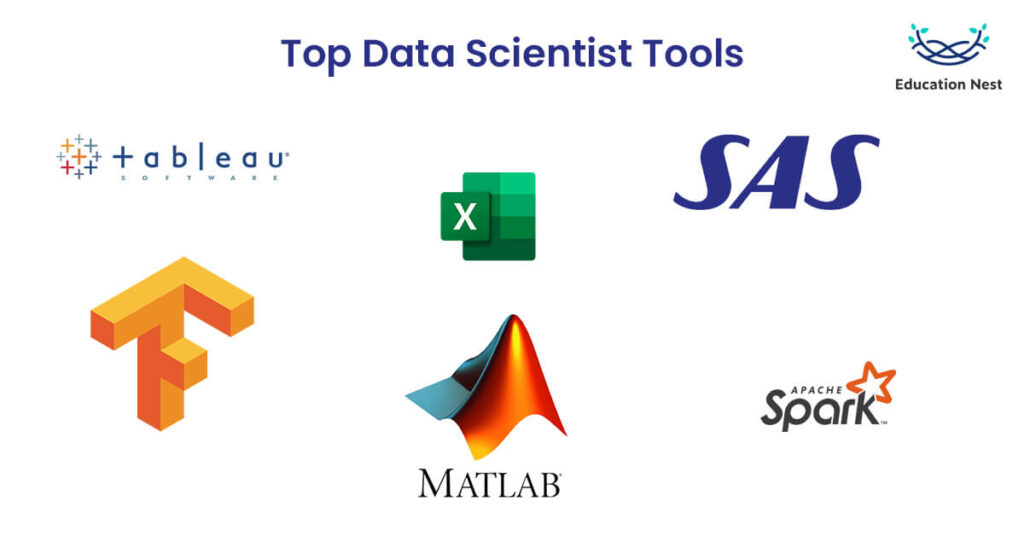
Apache Spark
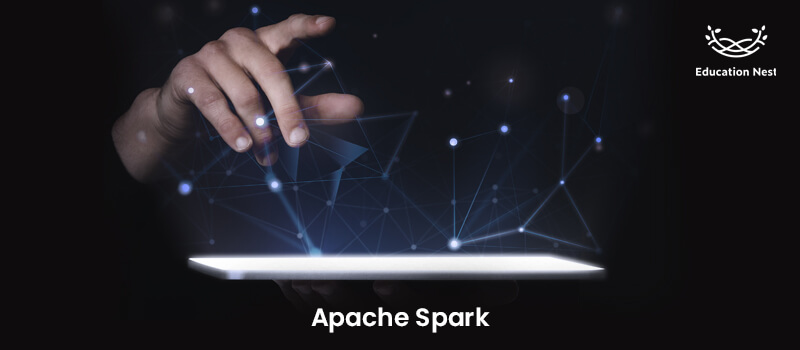
Spark, often known as Apache Spark, is the most popular analytics engine in data science. Spark is built to handle both batch and streaming processing.
Many application programming interfaces (APIs) make it easy for data scientists to access the same data over and over again for machine learning, SQL storage, etc. It’s a step up from Hadoop and can be as much as 100 times quicker than MapReduce.
- With Spark’s various Machine Learning APIs, Data Scientists can more accurately anticipate outcomes from existing datasets.
- Spark excels in its ability to manage streaming data compared to other Big Data Platforms. This distinguishes Spark from other analytic tools, which can only deal with data from the past and only in batches by allowing it to handle data as it comes in.
- Spark has many applications programming interfaces (APIs) that may be used with the programming languages Java, Python and R. However, the most potent combination of Spark is with Scala. This programming language is both cross-platform and built on the Java Virtual Machine.
- Since Hadoop is mainly used for storage, Spark’s superior cluster management makes it a clear winner over it. Using a cluster management system, Spark can quickly process applications.
MATLAB

To handle mathematical data, MATLAB offers a multiple-paradigm numerical computing environment. Matrix functions, algorithmic implementation, and statistical data modelling are all made easier with this exclusive tool. Multiple scientific fields rely heavily on MATLAB. It is common practice in data science to use MATLAB to model artificial neural networks and fuzzy logic.
- It is possible to generate impressive visuals with the help of MATLAB’s built-in graphics package.
- The fields of signal and image processing also make use of MATLAB.
- Since Data Scientists can use it for anything from fundamental data analysis to cutting-edge Deep Learning, it’s a remarkably flexible resource for the field.
- Because of its flexibility and ease of use, MATLAB is also an excellent choice for embedded and enterprise-level systems, making it a fantastic choice for data science.
- Also, it facilitates the automation of a wide variety of processes, from data extraction to the reuse of scripts in deliberative settings. However, being closed-source proprietary software, it has several limitations.
Related Post: Data Analysis Tools: It’s Not as Difficult as You Think
Microsoft Excel
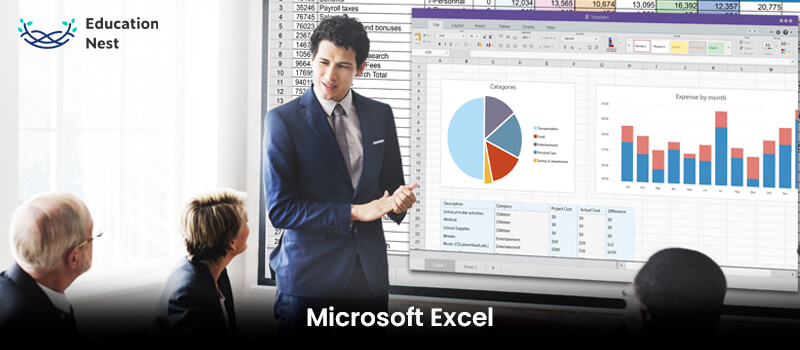
The gold standard in data science software Microsoft Excel was initially designed for use with spreadsheets. Still, it has expanded into other areas, including data analysis, visualization, and complicated numerical computations.
- When it comes to data analysis, Excel shines. Excel may not be as powerful as some newer tools, but it is still widely used for analysing large amounts of data.
- A wide variety of formulas, charts, filters, slicers, etc., are included with Excel. Excel also allows users to design their own procedures and functions. Excel isn’t the best tool for crunching through massive amounts of data, but it’s perfect for making eye-catching charts and spreadsheets.
- Integrating SQL with Excel for even more powerful data manipulation and analysis is possible. Data scientists often use Excel for data cleansing because it offers a graphical user interface (GUI) that allows for quick and straightforward preprocessing of data.
- ToolPak for Excel makes it much simpler to perform complex analyses. To be sure, it’s no match for state-of-the-art Data Science programmes like SAS. Excel is a great data science tool on a modest and non-enterprise scale.
Tableau
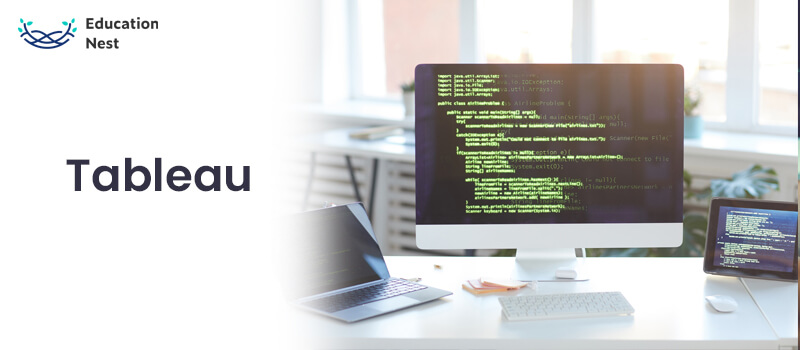
Tableau is a program that lets you make visual representations of data full of high-powered images and animations that make exploration fun. Companies that deal with BI are the primary target audience.
- Tableau’s most valuable feature is its capacity to connect to other data sources, such as spreadsheets, Online Analytical Processing cubes, databases, etc.
- In addition to these capabilities, Tableau can also create maps and display geographical data.
- You can utilise its data science software tool to do in-depth analyses of your data, not just look at pretty pictures of it.
- Connecting with other users and exchanging insights via Tableau’s built-in online community is possible. Tableau is business software. However, a free version is available to the public called Tableau Public.
TensorFlow
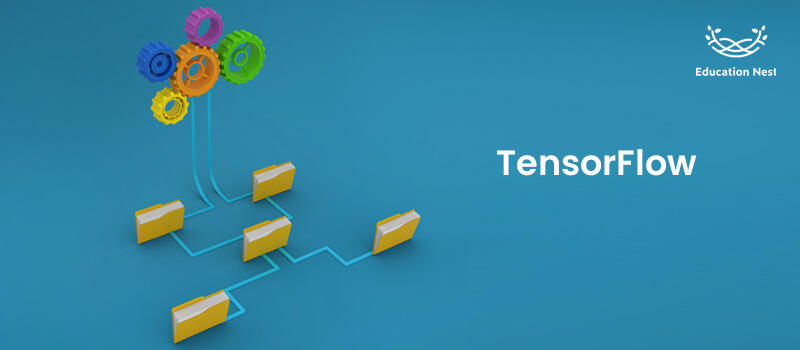
TensorFlow is now generally accepted as the go-to framework for machine learning. Deep Learning and other sophisticated machine learning algorithms heavily rely on it. Tensors, which are multidimensional arrays, inspired the developers to name their framework after them.
- It is a high-performance, open-source toolkit with extensive computational capabilities. TensorFlow was originally developed to operate on graphics processing units (GPUs), but it has also made its way onto central processing unit (CPU) platforms.
- This gives it an unrivalled advantage in the speed with which sophisticated machine-learning algorithms may be processed.
- Tensorflow’s enormous processing power may be used for many tasks, including language and picture production, voice recognition, drug discovery, and image categorisation.
- Data Scientists that focus on Machine Learning should be familiar with Tensorflow.
SAS (Statistical Analysis System)
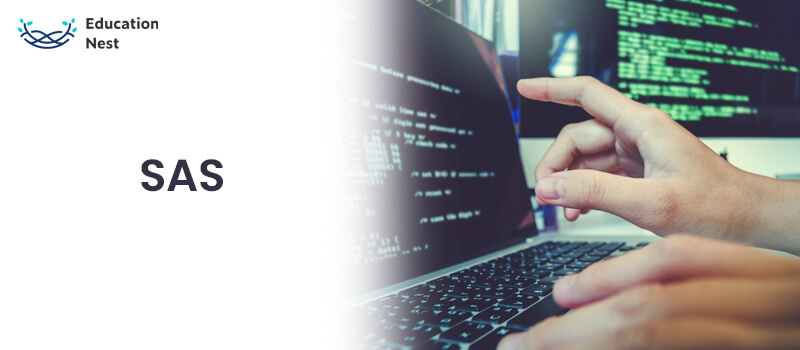
It is a kind of software used in data science that was developed with the sole purpose of doing statistical tasks. Organisations of a significant size often use SAS, a proprietary, closed-source program, to analyse data.
- Statistical modelling in SAS is accomplished via the underlying SAS programming language.
- Experts and businesses alike utilise it to create trustworthy commercial software. Data scientists may model and organise their data with the help of SAS’s many statistical libraries and tools.
- As a result of its high price and limited adoption outside of significant corporations, SAS is primarily employed by those in the military, government, and the public sector. Furthermore, newer, open-source technologies make SAS seem antiquated.
- In addition, the cost of an upgrade may be prohibitive since SAS’s libraries and packages are not included in the standard installation.
In conclusion, there is a lot of software used in data science. Data scientists use specialised software to conduct in-depth data analyses, design engaging visual representations of that data, and build robust prediction models based on statistical analysis and machine learning.
Most data science tools provide a central hub for performing a wide range of complicated data science tasks. Because of this, the user can start from scratch when implementing data science features.
